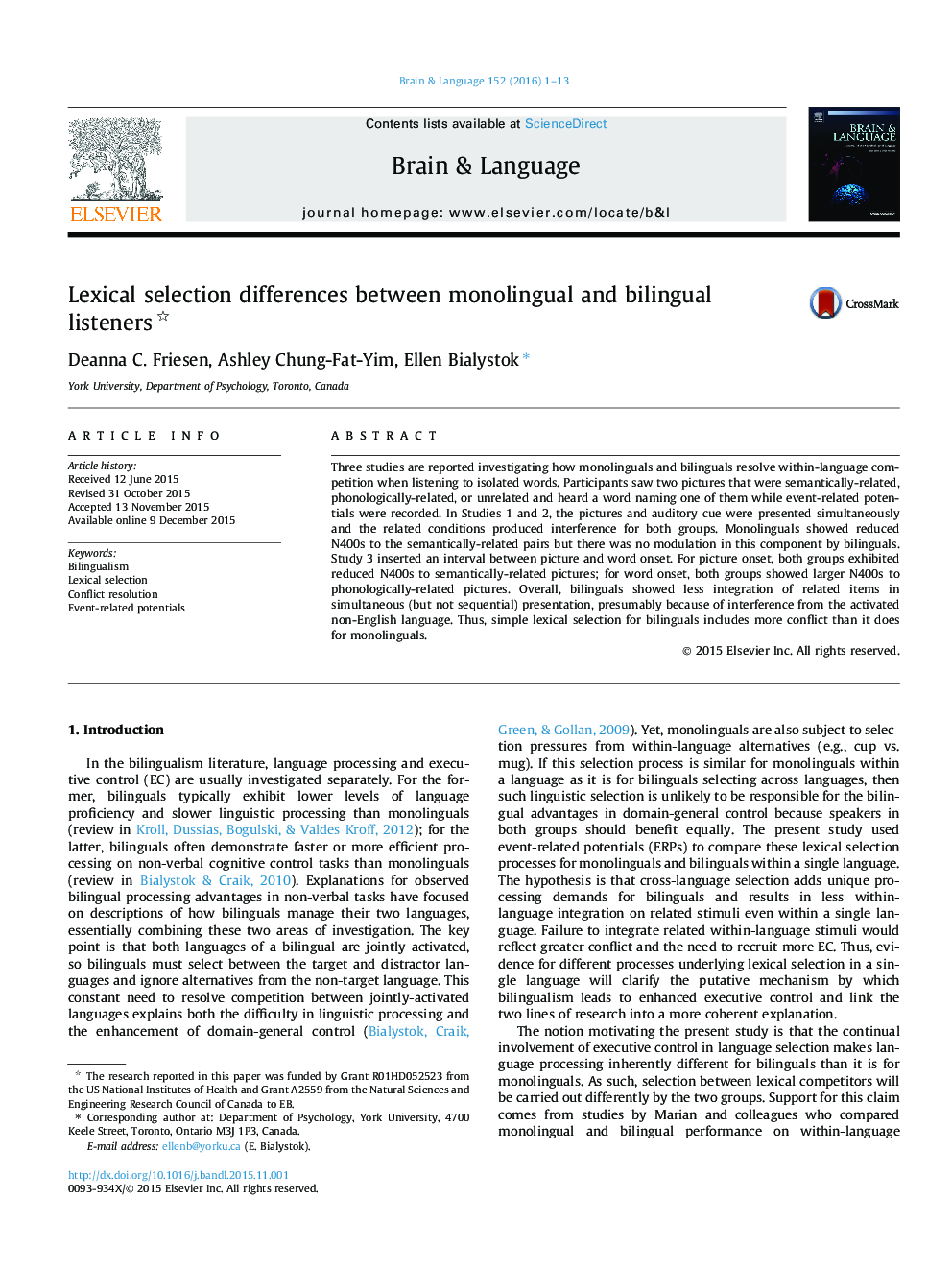| Article ID | Journal | Published Year | Pages | File Type |
|---|---|---|---|---|
| 925245 | Brain and Language | 2016 | 13 Pages |
•Related distractors interfere with decisions for both monolinguals and bilinguals.•Semantic relatedness modulates N400 for monolinguals but not bilinguals.•Semantic integration of pictures is similar for monolinguals and bilinguals.•Lexical selection with related distractors more effortful for bilinguals.
Three studies are reported investigating how monolinguals and bilinguals resolve within-language competition when listening to isolated words. Participants saw two pictures that were semantically-related, phonologically-related, or unrelated and heard a word naming one of them while event-related potentials were recorded. In Studies 1 and 2, the pictures and auditory cue were presented simultaneously and the related conditions produced interference for both groups. Monolinguals showed reduced N400s to the semantically-related pairs but there was no modulation in this component by bilinguals. Study 3 inserted an interval between picture and word onset. For picture onset, both groups exhibited reduced N400s to semantically-related pictures; for word onset, both groups showed larger N400s to phonologically-related pictures. Overall, bilinguals showed less integration of related items in simultaneous (but not sequential) presentation, presumably because of interference from the activated non-English language. Thus, simple lexical selection for bilinguals includes more conflict than it does for monolinguals.
